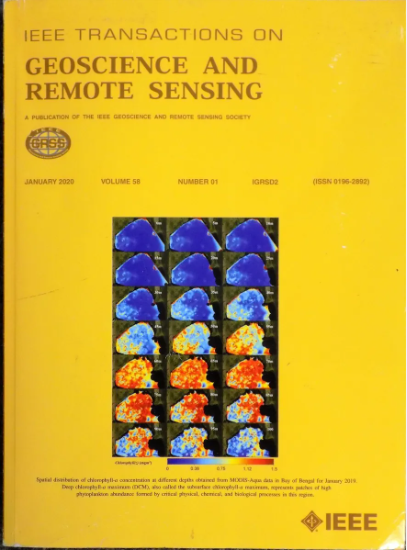基于深度特征提取的高光谱图像小样本分类
IF 7.5
1区 地球科学
Q1 ENGINEERING, ELECTRICAL & ELECTRONIC
IEEE Transactions on Geoscience and Remote Sensing
Pub Date : 2025-04-16
DOI:10.1109/TGRS.2025.3558817
引用次数: 0
摘要
标记样本不足的问题制约了深度学习方法在高光谱图像分类任务中的应用。融合不同来源的遥感图像(如HSI和LiDAR)是提高分类精度的常用策略。然而,获取同一区域的多源配准遥感图像耗时长,限制了多源配准策略在实际中的应用。鉴于近年来大模型在不同领域的成功,我们提出从大模型中提取深度信息,并将其与hsi融合,以提高小样本分类精度。具体而言,我们使用预训练的基础大模型估计hsi的深度信息作为深度特征,然后将原始光谱特征和深度特征输入到支持向量机(SVM)中完成分类。为了进一步提高分类精度,我们提出使用滑动窗方法提取不同波段的深度特征,从而获得更丰富的深度特征。在6个基准数据集上进行了大量的分类实验,验证了该方法的有效性。本文章由计算机程序翻译,如有差异,请以英文原文为准。
Depth Feature Extraction for Hyperspectral Image Small Sample Classification
The problem of insufficient labeled samples has restricted the application of deep learning method in hyperspectral image (HSI) classification tasks. Fusion of remote sensing images from different sources such as HSI and LiDAR is a common strategy to improve the classification accuracy. However, obtaining multisource registered remote sensing images of the same area is time-consuming, which limits the application of multisource strategy in practice. Motivated by the recent success of large models in different fields, we propose to extract depth information from large models and fuse it with HSIs to improve the small sample classification accuracy. Specifically, we use the pretrained foundation large model to estimate the depth information of HSIs as the depth features, and then input the original spectral features and depth features into the support vector machine (SVM) to complete the classification. In order to further improve the classification accuracy, we propose to use the sliding window method to extract the depth features of different bands, so as to obtain more rich depth features. A large number of classification experiments on six benchmark datasets verify the effectiveness of the proposed method.
求助全文
通过发布文献求助,成功后即可免费获取论文全文。
去求助
来源期刊

IEEE Transactions on Geoscience and Remote Sensing
工程技术-地球化学与地球物理
CiteScore
11.50
自引率
28.00%
发文量
1912
审稿时长
4.0 months
期刊介绍:
IEEE Transactions on Geoscience and Remote Sensing (TGRS) is a monthly publication that focuses on the theory, concepts, and techniques of science and engineering as applied to sensing the land, oceans, atmosphere, and space; and the processing, interpretation, and dissemination of this information.
 求助内容:
求助内容: 应助结果提醒方式:
应助结果提醒方式:


